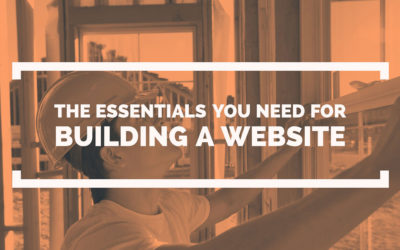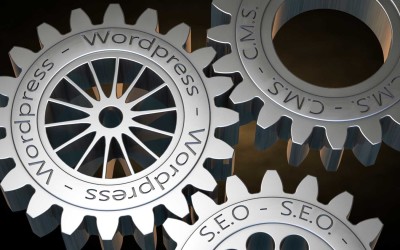The look and feel (i.e. design) of your website goes to the core of a great user experience. Things such as how the site is laid out, what fonts you are using, the images on your site and what type of functionality you have baked into it can be the difference between a website that a visitor stays on and one that a visitor leaves quickly.
You can have ten different designers create a website for you and they will all vary in the way they look and how your information is displayed. You might like some. You might not like others. Let’s face it, design is subjective and everyone’s opinion will differ. Beauty is in the eye of the beholder, after all.
But, there are some basic design dos and don’ts that any professional designer should be able to agree upon.
1. Every page on a website matters – not just the homepage.
Many people seem to think that their homepage is the “be all and end all” of their website. While I don’t disagree that it should look great and work smoothly, the same can be said for any page on your website.
Keep in mind, unless someone is going directly to your website, by typing in your domain name, chances are they aren’t landing on the homepage first. Because of the power of search engines, it’s much more likely that a website visitor lands on an interior page, or one of your blog pages, when they come to your website. More people are coming to your site through this interior pages then you probably think. If you aren’t using Google Analytics to track this, you should be.
So, your website must be consistent and look good on every page – even your blog pages. The same level of care taken to design your homepage needs to be extended throughout the entire site.
2. Throwing in tons of dynamic features does not equal good design.
Sometimes new website designers, or those that simply have little training in design, think that throwing all the bells and whistles on a website, to add a “wow” factor, will mask the fact that, frankly, they just don’t know what they are doing. They figure if they can dazzle the client with features, the client will overlook the inefficiencies and deficits of other things on the site.
And, as website designers, we are often approached by clients who want every possible extra feature available to them – from rotating banners to popups, and everything in between – thrown on their site because they think it looks cool.
The truth is most of these features and extras are totally unnecessary and make your website not only load slower but more complex for your visitor to try to navigate around.
In a Notre Dame university study on sliders, only the first slide got any action, and even then it was only at a rate of a whopping 1%.
That seems like an awful low rate of engagement for something that takes up such a large portion of your page and slows down the load time considerably on it. So why bog your site down with these slow loading monstrosities in the first place with something that is totally unuseful?
3. Whitespace is good.
Most professional website designers will agree that filling up the entire page with content is unnecessary. Whitespace is an excellent way to separate elements on a page and gives the items on your page some room to breathe.
As I stated in a previous article on whitespace in website design:
Keep in mind, you only have about 1/10 of a second for a grab your website visitors and entice them to stay on your web page and interact with it. Whitespace use can be critical here because no one wants to look at a cluster of images and text and have no idea where to start reading on the page.
When you fill up every available inch of space on your web page it makes it much more difficult for your visitor to try to wade through the noise to find what they are looking for and you are likely to lose them quickly.
This is a basic design concept that doesn’t just apply to online design, but also to print design.
4. A pretty design does not cure other issues with a website.
Some website designers like to think that their pretty designs can compensate for other bad issues with a website, but the fact of the matter is, it doesn’t.
An effective website is more than just fonts, graphics, and colors. Successful websites take into account more than just aesthetics, but also things such as quality content and ease of use for visitors.
According to Smashing Magazine, a website for design professionals:
Usability and the utility, not the visual design, determine the success or failure of a web-site. Since the visitor of the page is the only person who clicks the mouse and therefore decides everything, user-centric design has become a standard approach for successful and profit-oriented web design. After all, if users can’t use a feature, it might as well not exist.
Design alone can’t fix other issues a website may experience. A good website designer is going to understand that their work doesn’t just stop at making a page look pretty.
5. A client’s vision of their website is not necessarily the final product we should be giving them.
I’m sure that one has got your thinking, no? You hired us to build your website and you want it done the way you want it done. Right? The problem, and what most business owners fail to realize, is that no one else views your website the same way you do.
Your website developer should not be building the website for you – they should be building it for your customers. That can be a hard fact for many business owners to accept and I have turned down several lucrative jobs because I knew that, while I would be making the business owners happy by giving them what they wanted, the website would never go anywhere for them because the owner was too bull-headed to heed my professional advice on certain elements of the site that I thought were necessary to make it successful.
The fact of the matter is, your customers and potential customers are the ones that will be using your site the most – not you. You need to appeal to them.
Often times it is easy for us to think that our customers understand and use the same terminology that we do. But, unless you sell a niche product to a niche industry, this is almost hardly ever the case. Your website should speak to your customer’s and clients on their level, not on yours.
Designers should always be focused on designing with the end user in mind. This means your customers and clients. If a website developer is only giving you everything idea that you have brought to the table and is not offering input and direction on how to build a site that is user-centered, they are not doing you any favors. They would actually be doing a disservice to you.
And, on the flip side, if you aren’t willing to listen to a designer who is offering their advice on what your website should and shouldn’t do, then you are wasting your money on a site that likely won’t convert for you.
A web designer shouldn’t presume to know your business, nor could they tell you how to do it better. So please don’t presume to think that you know theirs when they tell you something is or isn’t a good idea for your website.
Most professional website developers want you to be happy with the end result. But, they also want you to have a website that works for you, not just a presence on the internet that does nothing to help grow your company.
The best websites are done in collaboration with each other. When choosing your website designer or website developer make sure it’s someone who has experience and you can work well with as a team.
- Google Shakes Up Digital World: Free Website Service No More! - January 8, 2024
- Unleashing the Power of Storyboarding: A Practical Guide to Designing Outstanding Websites - September 20, 2023
- Why Your Business Needs a Professional Web Consultant: A Comprehensive Guide - September 5, 2023





